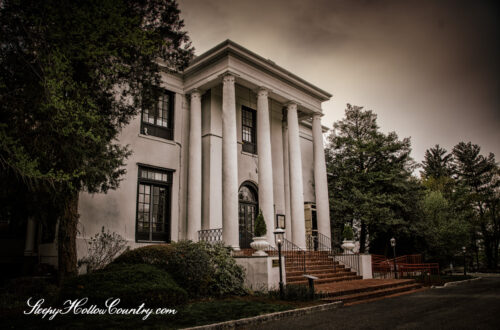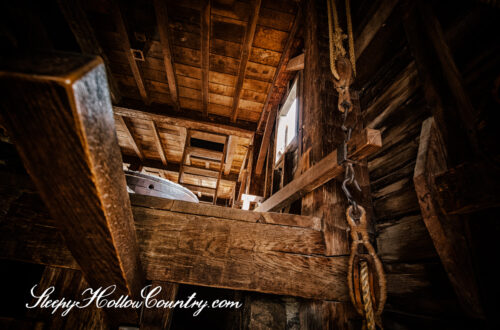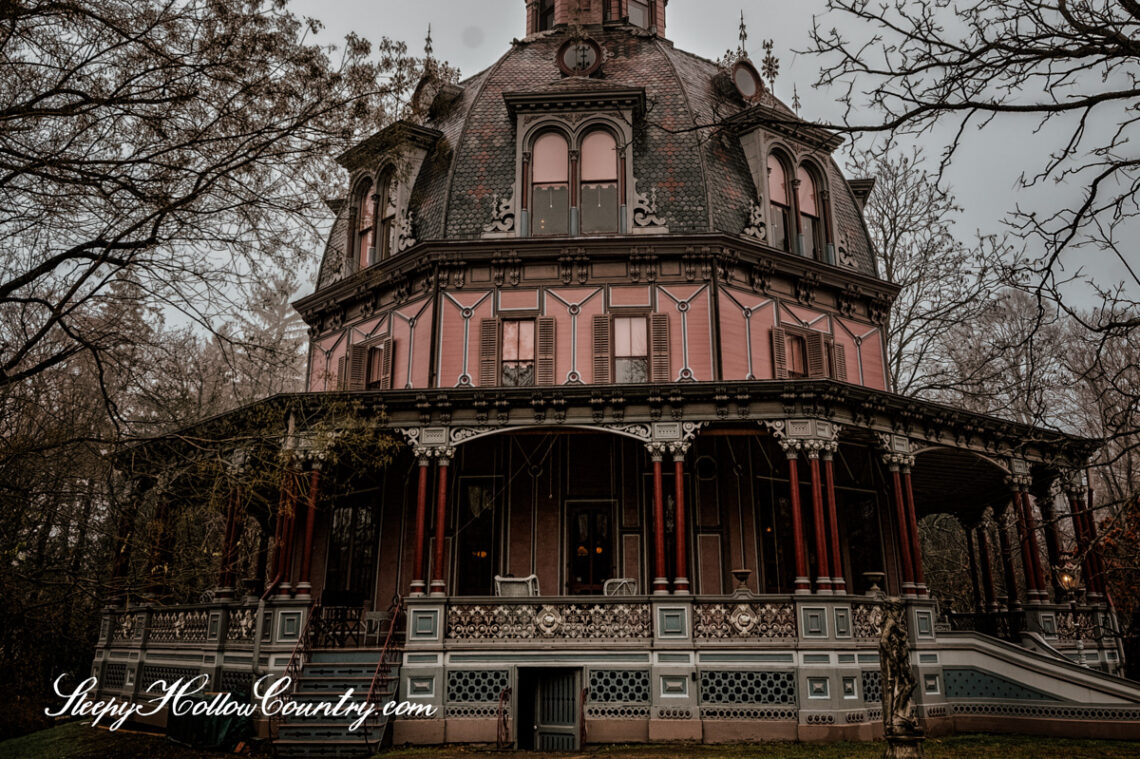
Ghosts of the Octagon House
“We have a ghost here, you know. Oh yes, we have. It followed us from 144 West 12th Street in New York City where we used to live. We’ve never seen it; it’s a fragrance that haunts the house.”
-Carl Carmer
This colorful house is an architectural and visual gem. With a string of occupants as colorful as the house itself, you would be perfectly reasonable to suspect a few lingered on after death. Before we get to the ghosts—and several owners have heartily embraced the presence of resident spirits—let’s take a brief look at its history and the characteristics that make it one-of-a-kind.
The Armour-Stiner House is one of the most visually unique homes in the world. It is the only known fully domed octagonal residence. Its original form was built in the 1860s by Paul J. Armour, a New York City financier. In this pre-Civil War period, octagonal houses were a popular mode of construction following the publication of a book, The Octagon House, A Home for All, by Orson Squire Fowler, a phrenologist and amateur architect. Fowler posited that 8-sided houses were inherently healthier and more efficient than simpler designs.
In 1872, the house was purchased by Joseph Stiner, a prominent New York City tea merchant. His alterations created the present unique structure. With plans to use the house as a summer retreat, Stiner added the dome and the veranda to create the elaborately detailed and colorful house we know today.
In 1882 Susie Hayt Dibble bought the Octagon House from Joseph Stiner. Susie died of tuberculosis a few years later at age 43. Her husband George Dibble soon remarried, taking as his second wife Susie’s younger sister, Annie Falls Hayt. Yes, you read that right—George’s two wives are both sisters and sisters-in-law. All three are together for eternity. Their monument in Sleepy Hollow Cemetery, the figure of a grieving woman embracing a rugged cross, is one of the most photographed in the cemetery.
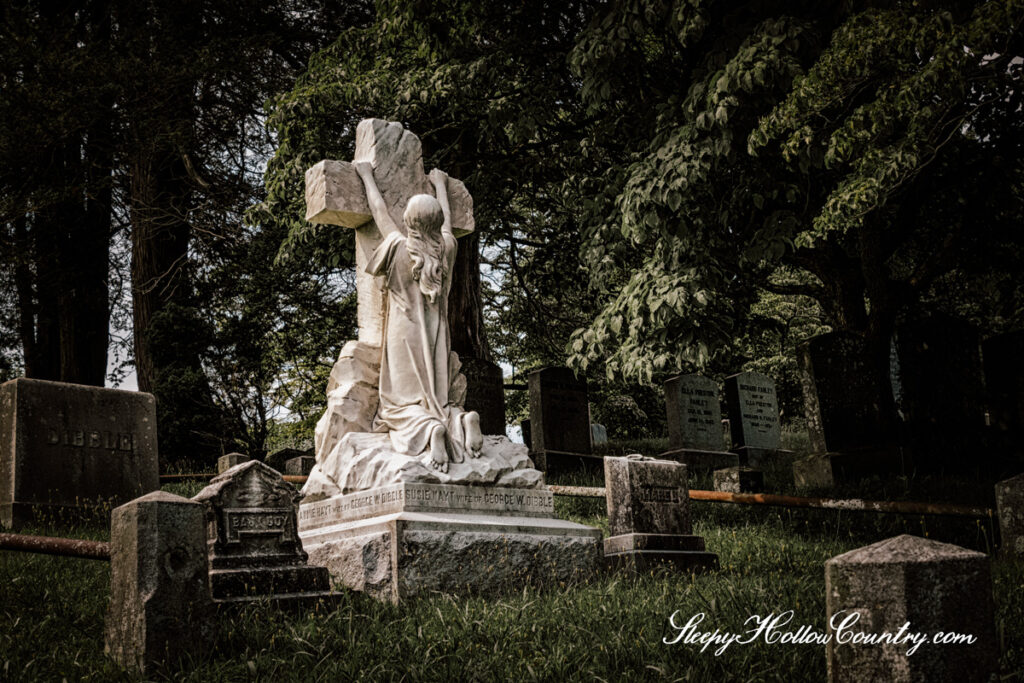
In the 1930s explorer, businessman, diplomat, writer, journalist, and photographer Aleko Lilius rented the house. Lilius, of Finnish, Swedish, and Russian extraction, traveled across much of the Americas, China, and Africa. These days he is chiefly remembered as the author of I Sailed with Chinese Pirates, an account of his adventures sailing the coast of China with Lai Choi San, a female pirate chief with several thousand buccaneers under her command. Some local legends attribute the ghostly figure of a woman in white to the time Lilius occupied the house, speculating she may be one of his companions from the pirate fleet.
One of the most celebrated owners and occupants of the house was Carl Lamson Carmer, a writer, and historian who owned the house from 1946 to his death in 1976. Carmer was an American writer of nonfiction, fiction and a collector of folklore and myths. He was one of the country’s most popular writers during the 1940s and 1950s. The ghosts of the Octagon house are definitively traced to his tenure.
The Fragrant Ghost
Literature and folklore make frequent mention of spirit manifestations through scents and fragrances. One of the more famous examples from the early twentieth century is the case of actress Peg Entwistle. Her dreams of a career on the silver screen dashed, she leaped to her death off the letter “H” of the Hollywood sign the night of September 16, 1932. Ever since, hikers and park rangers have periodically spotted her ghostly figure, often accompanied by a whiff of the gardenia perfume that was her favorite in life.
It is this type of fragrance or perfume that reputedly manifests itself in the Armour-Stiner House. Carl Carmer and his wife, artist, and photographer Elizabeth “Betty” Black, often recounted personal experiences with what they described as a “fragrant” or “aromatic” ghost. Interestingly, this spirit was attached to the Carmers before it became attached to this house. In an October 1968 interview with the Dobbs Ferry Sentinel Carl exclaimed “We have a ghost here, you know. Oh yes, we have. It followed us from 144 West 12th Street in New York City where we used to live. We’ve never seen it; it’s a fragrance that haunts the house.”
Doris Krauss, staff writer for Dobbs Ferry Sentinel, continued “The Carmers moved to the suburbs 21 years ago and assumed The Fragrance would remain behind but when they had been living in their Octagon House for a few months, they noticed that ‘she’ or ‘it’ had, like a homing pigeon, followed them to Irvington. They claim that friends who lived in their house while they were away on a trip once also smelled the olfactory ghost.”
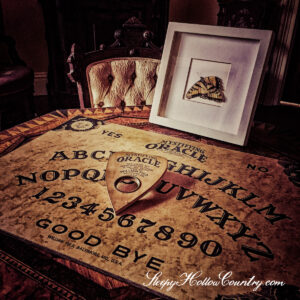
The Carmers invariably described their house ghost as a floral presence, a pleasant aroma they described as similar to the heliotrope, an old-timey garden flower whose blooms are said to be reminiscent of vanilla or cherry pie. In a September 19, 1971 article in the New York Daily News, Betty quipped “We feel she’s a girl ghost because she has a fleeting, flowery scent—though you can’t always tell, these days. We don’t know who she really is and she’s likely to show up just about any place in these 18 rooms we have.”
Inspired by this house ghost, Carmer delved deeper into the centuries-old traditions of perfume ghosts with an article titled “Aromas From Another World,” published in 1967 in the quarterly journal of the Westchester County Historical Society.
After the deaths of Carmer and Black, the house changed ownership twice and underwent a massive decades-long restoration. Did the activity and disruptions send the resident spirit to other realms? Apparently not. In a September 2021 interview with the local newspaper The Rivertowns Enterprise, Michael Lombardi, son of the architect responsible for the restoration of the house, confirmed the fragrant ghost still lingers. “She is mischievous,” he said. “She comes in the form of a smell: lilac is the scent everyone describes.”
The Ghost of the Lady in White
The other ghosts of the Octagon house make their prime-time appearance in Carmer’s collection of folk tales titled The Screaming Ghost and Other Stories. In “The Ghost of the River Octagon” he recounts the story of the daughter of a French widow of noble birth who purchased an octagonal house on the bank of the Hudson River from a prosperous tea merchant. The woman had but one daughter, a black-haired girl of great beauty and charm. On a nearby estate lived an aristocratic family with ties to a founding father of the republic whose roots lay in the sugar-producing island of Nevis. The eldest son of this family fell immediately and desperately in love with his exquisite new neighbor.
The boy’s family disapproved of the relationship and forbade him to see her. Undeterred, the couple continued to meet secretly. The girl’s mother eventually became aware of the visits and in her own pique of family pride ordered her daughter to break off the relationship. Instead, the pair made plans to run off to New York City to be married. One spring morning they set off to the steamboat dock in Tarrytown for the trip to the city. Unfortunately, a servant in the boy’s household raised the alarm. The lad’s father immediately gave chase on horseback while his mother ordered up her carriage and set off for the octagon house where she accused the girl’s parent of abetting the elopement.
The father arrived at the dock just after the crew cast off the boat’s docking lines. As it happened, the steamboat was racing a rival boat for a time record to New York City. As the boat approached the cliffs of the Palisades, its boiler exploded under the strain of the race. The young man died instantly. With the boat on fire, the remaining passengers faced the choice of burning to death or trying to swim to shore against the treacherous current. When the drowning victims were counted, the girl was among them.
The next day when a wagon attempted to deliver a pine box to the octagon house, the mother angrily refused to accept the coffin. The girl ended up buried in a potter’s field near the river. This might have been the end of the story of star-crossed lovers but for the arrival of the Carmers to the house. “The Ghost of the River Octagon” ends with a recurring dream that visited Betty around the time of year of the tragedy.
“Twice in recent successive springs my wife has awakened at the end of a strange dream. In it she stands on the moonlit veranda and sees a young girl walking up the drive. She seems to be surrounded by a mellow golden light. Suddenly from the shadows of the veranda darts an older woman who bars the path of the girl and by stern gestures bids her be gone.”
“The Ghost of the River Octagon”
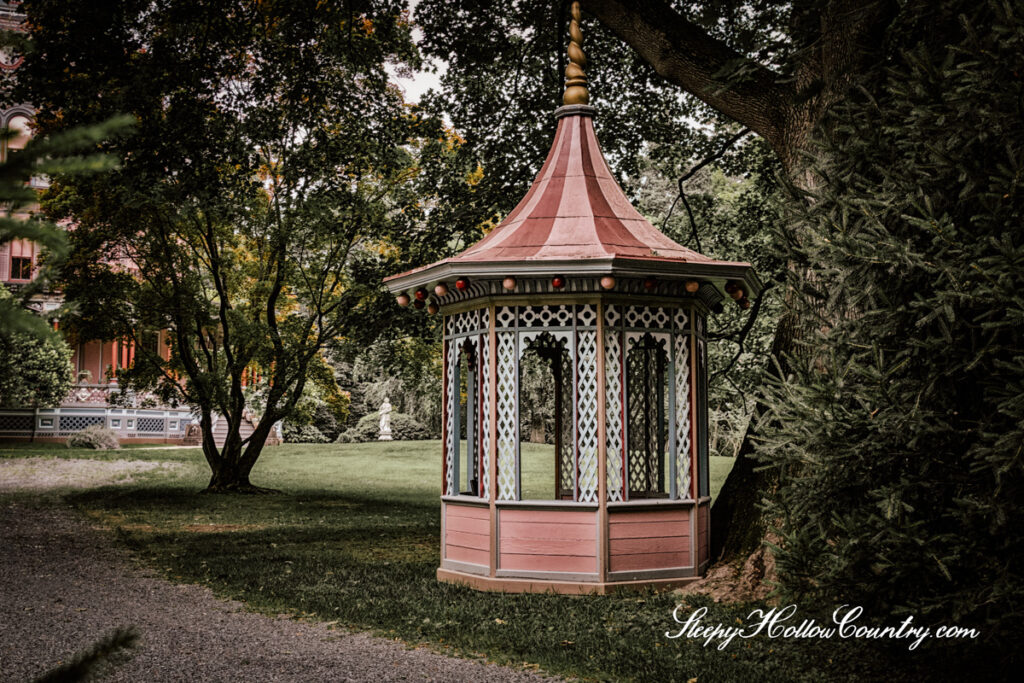
The girl turns away, weeping, walking back down the drive. When she reaches the well-house at the end of the drive she turns to look one last time at the house. As she does, the older woman has a change of heart, opening her arms to welcome back the young girl. Carmer ends, “It seems to the present occupants of the house that the two have been reconciled because whenever we have a visitor who claims to have psychic powers and to understand ghosts, we hear that Octagon House has a special feeling to it—a kind of aura from the past which bears with it a sense of happiness.”


